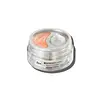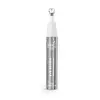What's inside
What's inside
 Key Ingredients
Key Ingredients

 Benefits
Benefits

 Concerns
Concerns

 Ingredients Side-by-side
Ingredients Side-by-side

Water
Skin ConditioningHydroxypropyl Starch Phosphate
Propanediol
SolventBacillus Ferment
Skin ConditioningRetinol
Skin ConditioningMacrocystis Pyrifera Extract
Skin ConditioningChenopodium Quinoa Seed Extract
Skin ConditioningAngelica Archangelica Callus Extract
Skin ProtectingGlycerin
HumectantSorghum Bicolor Stalk Juice
Skin ConditioningAdenosine
Skin ConditioningHydrolyzed Vegetable Protein
Skin ConditioningSodium Polystyrene Sulfonate
Emulsion StabilisingAcrylates/C10-30 Alkyl Acrylate Crosspolymer
Emulsion StabilisingAminomethyl Propanol
BufferingPolysorbate 20
EmulsifyingPropyl Gallate
AntioxidantAllyl Methacrylates Crosspolymer
Emulsion StabilisingPvp
Emulsion StabilisingPhenoxyethanol
PreservativeEthylhexylglycerin
Skin ConditioningPotassium Sorbate
PreservativeSodium Benzoate
MaskingBHT
AntioxidantDisodium EDTA
Citric Acid
BufferingCI 16035
Cosmetic ColorantCI 19140
Cosmetic ColorantWater, Hydroxypropyl Starch Phosphate, Propanediol, Bacillus Ferment, Retinol, Macrocystis Pyrifera Extract, Chenopodium Quinoa Seed Extract, Angelica Archangelica Callus Extract, Glycerin, Sorghum Bicolor Stalk Juice, Adenosine, Hydrolyzed Vegetable Protein, Sodium Polystyrene Sulfonate, Acrylates/C10-30 Alkyl Acrylate Crosspolymer, Aminomethyl Propanol, Polysorbate 20, Propyl Gallate, Allyl Methacrylates Crosspolymer, Pvp, Phenoxyethanol, Ethylhexylglycerin, Potassium Sorbate, Sodium Benzoate, BHT, Disodium EDTA, Citric Acid, CI 16035, CI 19140
Water
Skin ConditioningCaprylic/Capric Triglyceride
MaskingSqualane
EmollientGlycerin
HumectantNiacinamide
SmoothingCetearyl Olivate
Propanediol
Solvent1,2-Hexanediol
Skin ConditioningSorbitan Olivate
EmulsifyingGlyceryl Stearate Se
EmulsifyingTriolein
Skin ConditioningAllyl Methacrylates Crosspolymer
Emulsion StabilisingRetinol
Skin ConditioningTocopherol
AntioxidantCaffeine
Skin ConditioningFucus Vesiculosus Extract
EmollientSaccharomyces Cerevisiae Extract
Skin ConditioningResveratrol
AntioxidantCeramide NP
Skin ConditioningDihydroxy Methylchromone
AntioxidantTetraacetylphytosphingosine
Skin ConditioningTocopheryl Acetate
AntioxidantGlyceryl Dioleate
EmollientPolysorbate 20
EmulsifyingSorbitan Isostearate
EmulsifyingGluconolactone
Skin ConditioningXanthan Gum
EmulsifyingHydroxyethyl Acrylate/Sodium Acryloyldimethyl Taurate Copolymer
Emulsion StabilisingPolysorbate 60
EmulsifyingTrisodium Ethylenediamine Disuccinate
Sodium Chloride
MaskingPentaerythrityl Tetra-Di-T-Butyl Hydroxyhydrocinnamate
AntioxidantCaprylyl Glycol
EmollientSodium Benzoate
MaskingCaprylhydroxamic Acid
Mica
Cosmetic ColorantCI 77891
Cosmetic ColorantWater, Caprylic/Capric Triglyceride, Squalane, Glycerin, Niacinamide, Cetearyl Olivate, Propanediol, 1,2-Hexanediol, Sorbitan Olivate, Glyceryl Stearate Se, Triolein, Allyl Methacrylates Crosspolymer, Retinol, Tocopherol, Caffeine, Fucus Vesiculosus Extract, Saccharomyces Cerevisiae Extract, Resveratrol, Ceramide NP, Dihydroxy Methylchromone, Tetraacetylphytosphingosine, Tocopheryl Acetate, Glyceryl Dioleate, Polysorbate 20, Sorbitan Isostearate, Gluconolactone, Xanthan Gum, Hydroxyethyl Acrylate/Sodium Acryloyldimethyl Taurate Copolymer, Polysorbate 60, Trisodium Ethylenediamine Disuccinate, Sodium Chloride, Pentaerythrityl Tetra-Di-T-Butyl Hydroxyhydrocinnamate, Caprylyl Glycol, Sodium Benzoate, Caprylhydroxamic Acid, Mica, CI 77891
Ingredients Explained
These ingredients are found in both products.
Ingredients higher up in an ingredient list are typically present in a larger amount.
We don't have a description for Allyl Methacrylates Crosspolymer yet.
Glycerin is already naturally found in your skin. It helps moisturize and protect your skin.
A study from 2016 found glycerin to be more effective as a humectant than AHAs and hyaluronic acid.
As a humectant, it helps the skin stay hydrated by pulling moisture to your skin. The low molecular weight of glycerin allows it to pull moisture into the deeper layers of your skin.
Hydrated skin improves your skin barrier; Your skin barrier helps protect against irritants and bacteria.
Glycerin has also been found to have antimicrobial and antiviral properties. Due to these properties, glycerin is often used in wound and burn treatments.
In cosmetics, glycerin is usually derived from plants such as soybean or palm. However, it can also be sourced from animals, such as tallow or animal fat.
This ingredient is organic, colorless, odorless, and non-toxic.
Glycerin is the name for this ingredient in American English. British English uses Glycerol/Glycerine.
Learn more about GlycerinPolysorbate 20 is made by combining ethoxylation of sorbitan, ethylene oxide, and lauric acid. It is a mild cleansing agent, surfactant, and emulsifier.
As a surfactant, it helps collect dirt and oils for washing. Emulsifiers prevent oils and water from separating.
Polysorbate 20 also adds scent to a product. Since it is made using sorbitol, it has a sweet scent. Sorbitol can also be found in fruits such as apples and peaches.
The lauric acid used to create Polysorbate 20 is often derived from coconuts.
Polysorbate 20 may not be fungal acne safe.
Learn more about Polysorbate 20Propanediol is an all-star ingredient. It softens, hydrates, and smooths the skin.
It’s often used to:
Propanediol is not likely to cause sensitivity and considered safe to use. It is derived from corn or petroleum with a clear color and no scent.
Learn more about PropanediolRetinol is a gold-standard ingredient for anti-aging. It is a form of Vitamin A and belongs to the class of retinoids that also includes tretinoin.
Why is retinol famous?
It has the most scientific studies backing up its skin benefits out of all the non-prescription ingredients.
Retinol is proven to:
This is why retinol is effective at removing wrinkles, fading dark spots, treating acne, and reducing the appearance of pores.
Studies show retinol is less effective when exposed to UV. Be sure to look for appropriate packaging to keep your retinol potent (similar to Vitamin C).
Using retinol or any retinoids will increase sun-sensitivity in the first few months. Though studies show retinoids increase your skin's natural SPF with continuous use, it is best to always wear sunscreen and sun-protection.
We recommend speaking with a medical professional about using this ingredient during pregnancy.
Retinol may cause irritation in some people, so be sure to patch test. Experts recommend 'ramping up' retinol use: start using this ingredient once a week and work up to using it daily.
Read about Tretinoin
Learn more about RetinolSodium Benzoate is a preservative. It's used in both cosmetic and food products to inhibit the growth of mold and bacteria. It is typically produced synthetically.
Both the US FDA and EU Health Committee have approved the use of sodium benzoate. In the US, levels of 0.1% (of the total product) are allowed.
Sodium benzoate works as a preservative by inhibiting the growth of bacteria inside of cells. It prevents the cell from fermenting a type of sugar using an enzyme called phosphofructokinase.
It is the salt of benzoic acid. Foods containing sodium benzoate include soda, salad dressings, condiments, fruit juices, wines, and snack foods.
Studies for using ascorbic acid and sodium benzoate in cosmetics are lacking, especially in skincare routines with multiple steps.
We always recommend speaking with a professional, such as a dermatologist, if you have any concerns.
Learn more about Sodium BenzoateWater. It's the most common cosmetic ingredient of all. You'll usually see it at the top of ingredient lists, meaning that it makes up the largest part of the product.
So why is it so popular? Water most often acts as a solvent - this means that it helps dissolve other ingredients into the formulation.
You'll also recognize water as that liquid we all need to stay alive. If you see this, drink a glass of water. Stay hydrated!
Learn more about Water